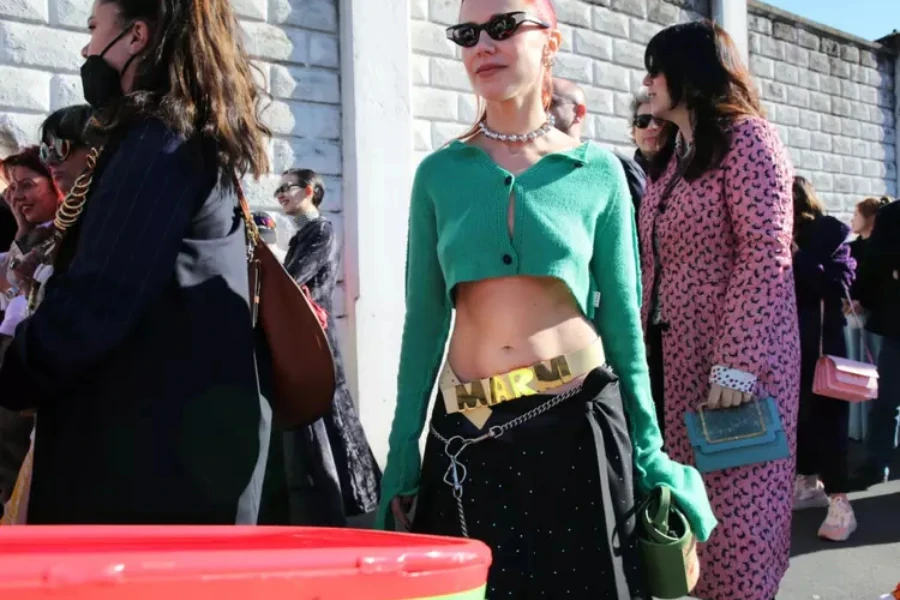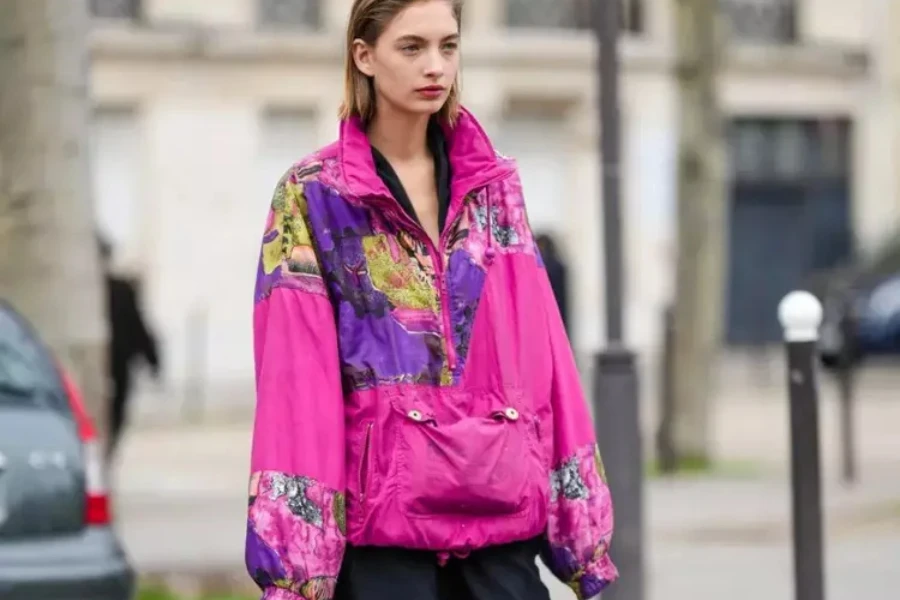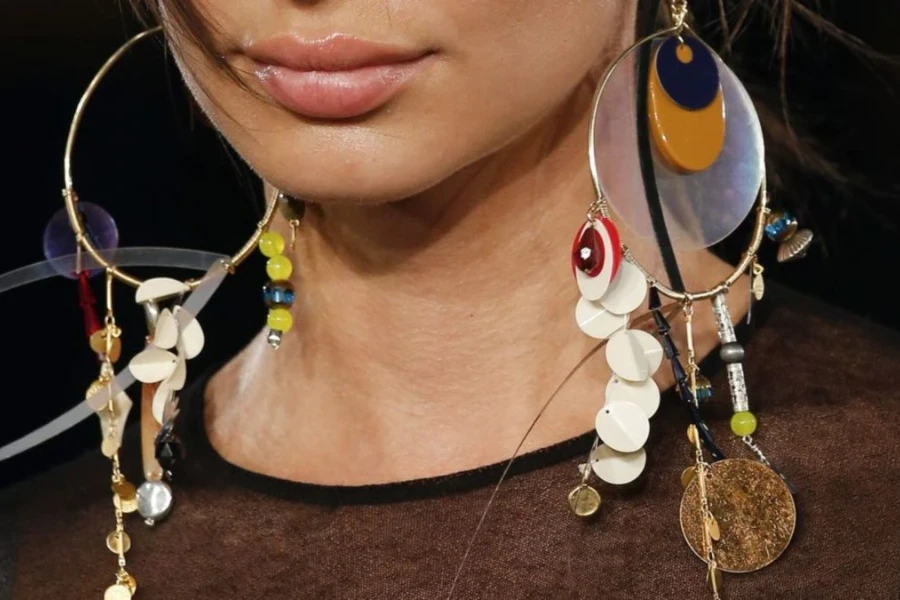The fashion landscape is continuously evolving, and with the Spring/Summer 2024 season on the horizon, it’s crucial for online retailers in the industry to stay informed about the latest trends in women’s soft accessories. This sector, known for its dynamic nature, is seeing a blend of innovative designs, fresh color palettes, and sustainable materials. As consumer preferences shift towards more personalized and environmentally conscious choices, understanding these trends becomes essential for staying competitive. This article explores the key elements shaping women’s soft accessories for Spring/Summer 2024, providing valuable insights for online retailers looking to update their collections.
Table of Contents:
1. Trend overview: Spring/Summer 2024
2. Color and material innovations
3. Popular Styles and Patterns
4. Consumer preferences and market insights
5. Sustainability in accessory design
6. Technology integration in fashion accessories
7. Strategies for online retail success
1. Trend overview: Spring/Summer 2024

The Spring/Summer 2024 season for women’s soft accessories is marked by a vibrant blend of innovation and nostalgia. A significant trend is the resurgence of classic patterns with a modern twist, reflecting a blend of past and present in fashion design. Textural diversity is another key aspect, with accessories featuring a mix of smooth and textured fabrics, adding depth and interest to each piece.
In terms of color, there’s a noticeable shift towards bold and bright hues, paired with softer, earthy tones, creating a balanced yet striking visual appeal. These colors not only resonate with the season’s warmth and vibrancy but also align with the growing consumer desire for accessories that make a statement while being versatile enough to pair with a range of outfits.
Materials are evolving too, with an increasing focus on sustainable and eco-friendly options. Biodegradable fabrics and recycled materials are becoming more prevalent, catering to the environmentally conscious consumer. This shift is not just a trend but a movement, reflecting a deeper understanding and respect for our environment within the fashion industry.
Moreover, the fusion of functionality and aesthetics is evident in the design of soft accessories. Practical elements are being incorporated without compromising style, meeting the modern woman’s need for fashion that’s both beautiful and practical. This harmonious blend of function and fashion is setting the tone for accessory design in this season and beyond.
2. Color and material innovations

Spring/Summer 2024 is seeing a notable shift in the color palette and material choices for women’s soft accessories. The season is characterized by an embrace of lively, vivid colors that evoke a sense of joy and optimism. These range from bright, energetic hues like electric blues and vibrant pinks to more understated, earthy tones such as sage greens and sandy beiges. This diverse color range allows for a wide array of styling options, catering to various consumer preferences and enhancing the appeal of the accessories across different market segments.
In the realm of materials, there’s a clear movement towards sustainability and innovation. Eco-friendly materials are at the forefront, with a growing use of organic cotton, bamboo fibers, and recycled polyester. These materials not only offer environmental benefits but also provide unique textures and qualities that set them apart from traditional fabrics. The use of such materials reflects a growing consumer awareness and demand for sustainable fashion choices.
Another trend is the exploration of high-tech fabrics. These materials offer advanced properties like UV protection, water resistance, and enhanced durability, aligning with the modern consumer’s desire for accessories that are not only stylish but also functional and long-lasting. The integration of these innovative materials into soft accessories showcases the industry’s commitment to blending fashion with functionality, providing consumers with products that are both beautiful and practical.
3. Popular Styles and Patterns

The Spring/Summer 2024 season brings a fresh wave of styles and patterns in women’s soft accessories. One of the standout trends is the resurgence of vintage-inspired designs. Floral patterns, reminiscent of classic styles, are being reimagined in bolder, more contemporary formats. These floral designs, ranging from delicate to abstract, appear on scarves, hats, and other accessories, offering a nostalgic yet modern appeal.
Geometric patterns are also gaining popularity, with an emphasis on clean lines and asymmetric designs. These patterns, often in contrasting colors, add a modern and edgy twist to the accessories, appealing to consumers looking for statement pieces that are both chic and eye-catching.
In terms of styles, oversized scarves and wraps are in vogue, offering versatility and comfort. These larger accessories can be styled in numerous ways, making them a popular choice for consumers seeking both fashion and functionality. Lightweight, airy fabrics are being used to create these oversized pieces, ensuring they are comfortable even in warmer weather.
Another emerging trend is the use of mixed media in accessories. Combining different materials, such as combining silk with linen or incorporating metallic threads into cotton, adds texture and depth to the accessories. This blend of materials not only enhances the visual appeal but also provides a unique tactile experience for the wearer.
These trends in styles and patterns reflect a broader theme in the fashion industry: a blend of the old and new, where traditional designs are reinterpreted with a modern twist, offering consumers a diverse range of options to express their individual styles.
4. Consumer preferences and market insights

The consumer landscape for women’s soft accessories in Spring/Summer 2024 is shaped by a blend of aesthetics, functionality, and sustainability. Market insights reveal a strong preference for accessories that are not only stylish but also align with ethical and environmental values.
One significant trend is the demand for personalization and uniqueness in accessories. Consumers are increasingly seeking products that stand out, offering a sense of individuality. This trend is driving the popularity of custom-made or limited-edition pieces, allowing consumers to express their personal style through unique designs.
Sustainability continues to be a major factor influencing consumer choices. There is a growing awareness and preference for accessories made from eco-friendly materials and produced through ethical manufacturing processes. This shift is prompting retailers to consider the environmental impact of their products and supply chain, moving towards more sustainable business practices.
Another key insight is the importance of versatility in accessories. Consumers are looking for pieces that can be styled in multiple ways and transition seamlessly from day to night. This preference for versatility is leading to designs that are adaptable and multifunctional, providing value and practicality.
Additionally, the rise of online shopping has impacted consumer behavior. There’s an increasing expectation for a seamless digital shopping experience, with clear product information, high-quality images, and easy navigation. Online retailers who can meet these expectations are better positioned to attract and retain customers in this competitive market.
Understanding these consumer preferences and market trends is crucial for online retailers. By aligning their product offerings with these insights, they can better meet the needs of their target audience and stay ahead in the dynamic world of women’s fashion accessories.
5. Sustainability in accessory design

The Spring/Summer 2024 season marks a significant shift towards sustainability in women’s soft accessory design. This trend reflects a deeper commitment within the fashion industry to address environmental concerns and cater to the growing consumer demand for eco-friendly products.
Key to this movement is the use of sustainable materials. Designers and brands are increasingly turning to organic, recycled, and biodegradable fabrics for their accessory lines. These materials not only reduce environmental impact but also offer new textures and aesthetics, enriching the design possibilities.
Another aspect of sustainable design is the focus on durability and timeless style. Accessories that are designed to last and transcend seasonal trends offer consumers a sustainable choice, reducing the need for frequent replacements and minimizing waste. This approach encourages a more thoughtful and less consumptive attitude towards fashion.
In addition to material choices and design longevity, sustainable practices also extend to production processes. Ethical manufacturing, which includes fair labor practices and reduced carbon footprints, is becoming a priority for consumers. Brands that transparently communicate their sustainable practices are gaining favor, as consumers increasingly make purchasing decisions based on a brand’s ethical credentials.
The integration of sustainability into accessory design is not just a trend, but a necessary evolution of the fashion industry. It represents a shift towards a more responsible and conscientious approach to fashion, where beauty, functionality, and sustainability coexist harmoniously.
6. Technology integration in fashion accessories

In the Spring/Summer 2024 season, technology integration is becoming a pivotal element in the design of women’s soft accessories. This fusion of fashion and technology is not only enhancing the aesthetic appeal of accessories but also adding functional value, meeting the modern consumer’s desire for innovation and convenience.
One of the key trends in this area is the incorporation of smart technology into accessories. For example, scarves and hats equipped with UV sensors or temperature-regulating fabrics are gaining popularity. These high-tech features offer practical benefits, such as protecting the wearer from environmental elements, while maintaining style and comfort.
Another aspect of technology integration is the use of digital tools in the design and customization process. Advanced software allows for intricate patterns and designs to be created with precision, offering a new level of detail and creativity in accessory design. Additionally, 3D printing technology is being explored for its potential to create unique, customizable accessory pieces, further personalizing the consumer experience.
The integration of QR codes and NFC (Near Field Communication) technology is also emerging in fashion accessories. These features enable interaction with digital content or services, such as accessing product information or exclusive online content, adding a layer of interactivity and engagement for the consumer.
The incorporation of technology in fashion accessories is a clear indication of the industry’s adaptation to the digital age. It reflects a forward-thinking approach where fashion meets function, providing consumers with products that are not only fashionable but also enriched with technological advancements.
7. Strategies for online retail success

In the dynamic and competitive landscape of women’s soft accessories, online retailers need to adopt effective strategies to capitalize on the Spring/Summer 2024 trends. Success in this market requires more than just offering the latest styles; it involves understanding the market, engaging with consumers, and leveraging digital tools to enhance the shopping experience.
A key strategy is to create a strong online presence. This involves having a user-friendly website with high-quality product images, detailed descriptions, and easy navigation. Utilizing social media platforms to showcase products and engage with customers is also crucial. These platforms can be used to share styling tips, new arrivals, and behind-the-scenes content, creating a connection with the audience.
Personalization is another important factor. Offering customized products or services, such as monogramming or adjustable designs, can set a retailer apart. Personalization enhances the customer experience by making it more unique and tailored to individual preferences.
Staying informed about market trends and consumer preferences is essential. Retailers should regularly analyze market data and customer feedback to understand what drives purchase decisions. This knowledge can inform inventory selection, marketing strategies, and overall business direction.
Finally, sustainability should be a core aspect of the business strategy. This includes offering sustainable products, using eco-friendly packaging, and transparently communicating the brand’s commitment to ethical practices. As consumers become more environmentally conscious, sustainability can be a significant differentiator in the market.
By implementing these strategies, online retailers can effectively navigate the evolving trends in women’s soft accessories, appealing to contemporary consumers and fostering business growth.
Conclusion
The Spring/Summer 2024 season presents a wealth of opportunities for online retailers in the women’s soft accessories market. By embracing the emerging trends in color, material, style, and technology integration, retailers can cater to the evolving preferences of the modern consumer. Sustainability and personalization are key themes, reflecting a shift towards more ethical and customized fashion choices. Staying attuned to these trends and adapting business strategies accordingly will be crucial for success.
Online retailers have the advantage of agility and a direct connection to consumers through digital platforms. Leveraging this to offer a personalized, engaging, and sustainable shopping experience can set a retailer apart in this competitive market. The future of women’s soft accessories looks bright and dynamic, with innovation and conscientiousness at its core. Retailers who embrace these changes and align their offerings with the needs and values of their customers are well-positioned to thrive in the coming years.




